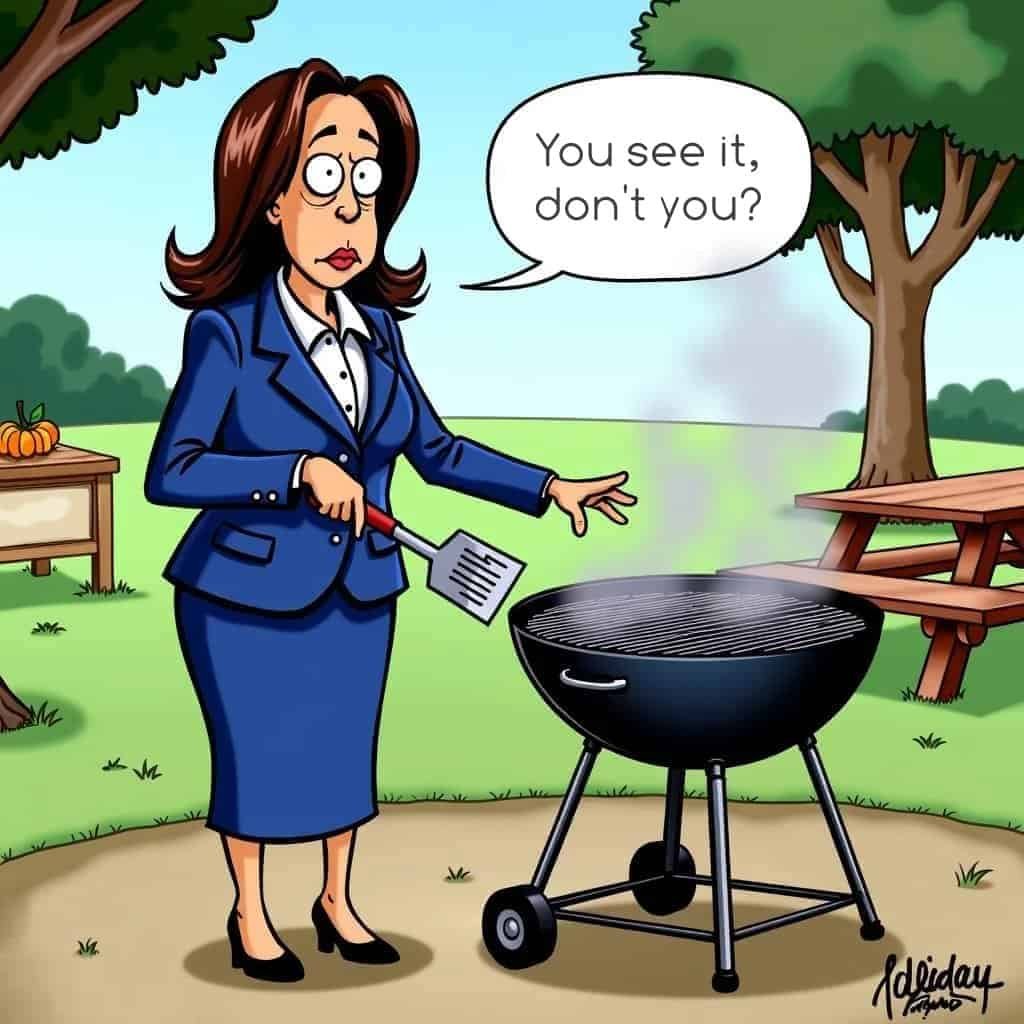As we kindly usher Kamala Harris closer to wrapping up her stint as Vice President, her promises of an “opportunity economy” seem as elusive as a leprechaun’s pot of gold. Now, don’t get me wrong, the vision of boosting economic empowerment, especially for communities continuously striving to rise, sounds as noble as a bald eagle soaring high. But here we are, with households gasping under the weight of ballooning prices. What’s going on here?
Harris pitched a noble strategy during her campaign. Her grand idea was to sprinkle $50,000 on budding entrepreneurs and dish out $25,000 to aspiring homeowners. These initiatives target hardworking individuals looking to kickstart businesses or finally get that piece of the American Dream—a place to call their own. Yet, here we sit, examining what numerous Americans have come to wonder about—the mighty chasm between campaign pledges and economic reality.
The Impact of Inflation on Everyday Life
Let’s unroll some numbers, shall we? Bread prices up by over 30%—who knew? Ground beef’s got a hefty 33% markup. Rent’s soaring by a stellar 25%. And let’s not even get started on fuel and prescription drugs, which are taking a toll like an unwanted gym subscription. Let’s talk plain truth: inflation is the elephant in the room under the current Administration. It looms large as an uninvited guest, casting a long shadow over Harris’ forward-thinking propositions.
Price Increases in Essential Items
| Item | Price Increase |
|---|---|
| Bread | 30% |
| Ground Beef | 33% |
| Rent | 25% |
The Reality of Slowing Inflation
Instead of gracing us with immediate solutions to tackle the rising cost of everyday items, the narrative becomes about slowing inflation. But let us muse upon this—slowing inflation doesn’t mean prices are falling; they’re just climbing a bit slower than before. So while good news gets headlines, Americans are left shouldering an additional $889 for groceries and rent annually.
Political Strategies and Economic Realities
Don’t you love it when politicians talk strategy? Harris had over three and a half years to steer these pressing issues toward a brighter horizon. While promises of future benefits tantalize the hopeful, they do little to relieve the current strain on the pocketbooks of citizens.
Contrast this with an economic walk down memory lane to previous administrations. Remember the 7 million jobs created, the unprecedented relief during the pandemic captured through the CARES Act, not to mention the significant reduction in unemployment rates across varying demographics? Here were tangible actions benefiting working Americans immediately. It’s not just wistful nostalgia; it’s a comparative testament to policy effectiveness and timely execution.
Contrasting Economic Philosophies
Conservative values advocate for personal responsibility and small government, celebrating the spirit of free enterprise. Public choice fosters innovation across the board. Conversely, liberal approaches often echo a penchant for expansive government intervention, wagonloads of regulations, and often unkept fiscal promises—truth be told.
Conservative vs. Liberal Economic Approaches
| Conservative Approach | Liberal Approach |
|---|---|
| Personal responsibility | Government intervention |
| Small government | Expansive government |
| Free enterprise | Increased regulations |
Conclusion: Bridging the Gap Between Promise and Reality
You know, Kamala Harris has been pushing this idea of an “opportunity economy” for a while now. Sounds nice, doesn’t it? The idea that everyone gets a shot, that businesses will flourish, and families will thrive. But here’s the problem—it lacks the foundation. You can’t build an opportunity economy on promises alone, especially when those promises don’t even touch the immediate pain people are feeling. Families are struggling with skyrocketing grocery bills, rising rent, and gas prices that make you wince every time you fill up. Where’s the relief?
Conservative policies of the past have shown us how immediate, actionable steps can provide real economic relief—lower taxes, more jobs, more money in your pocket. That’s not just talk, those are results. Harris, on the other hand, keeps setting her sights on a future where everything works out just fine… eventually. But we’ve been waiting, and while we wait, costs keep climbing, and promises keep piling up.
Here’s the bottom line: it’s not just about laying out a vision or setting a course—it’s about getting there, intact, with everyone along for the ride. So as voters, let’s stop falling for the glitzy sales pitch and start demanding the receipts. Look at the results, not just the words. Ask yourself, are you better off today than you were a few years ago? Because in the end, actions speak louder than campaign slogans.






